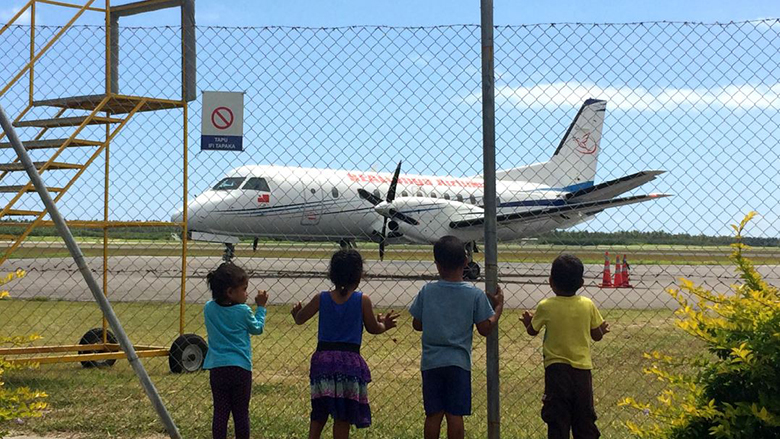In 1952, 65 years ago, the International Bank for Reconstruction and Development granted a US$ 7 million loan to KLM Dutch Airlines. This loan, which supported a $33.5 million re - equipment program involving the acquisition of twenty-three aircraft for KLM, was the 59th loan of the World Bank since its creation in 1944. However, loan 59 also marked the first financing in the air transport sector of a client country, the Netherlands, recognizing the importance of the sector for the economic development of post-war Europe.
The 12th edition of the World Bank Group (WBG) Air Transport Annual Report, summarizes the current portfolio of the air transport practice at the WBG, and highlights some of the projects in more detail. Over the past 65 years, the WBG has engaged in various projects that aimed at supporting the development of sustainable air transport networks. The types of projects range from aircraft acquisitions, airport and air traffic control infrastructure investments, capacity build-ing in regulatory oversight, advise on aviation policy matters and environmental issues, as well as fostering private sector participation in air transport in emerging markets.
The global Air Transport Industry continues on its successful path, marked by strong growth especially in certain emerging markets, and healthy consolidation in more mature regions. While air cargo still remains somewhat below expectations, passenger growth is solid and air travelers are forecasted to double by 2035. Globally, the air transport industry now supports 63 mil-lion jobs and US$2.7 trillion in global GDP.
The improved performance of the sector has made investments in air transport more attractive. For a second year, airlines’ return on capital exceeded their cost of capital on a global scale, and many mid-sized airports in emerging markets are able to attract private capital to finance needed infrastructure expansion. Nevertheless, not all regions experience strong financial performance. For example, while the Asia-Pacific carriers were able to post a profit of US$ 900 million in 2016, African airlines lost US$ 800 million, and many Africa airports still experience insufficient traffic for being able to finance needed investments.
The WBG continues to recognizes the potential of air transport to contribute to economic development and shared prosperity. However, given the heterogeneous development of the sector in emerging markets, it is important to focus support and investments in regions and markets where the private sector is challenges by low or negative returns. This explains the declining number for public sector airport projects, as well as the WBG’s enhanced focus on Public-Private Partnerships in airport infrastructure projects.
This report summarizes the WBG air transport development activities, which include an overall portfolio of US$1.24 billion, and several analytical and technical research products. With this activity we remain actively engaged around the world on air transport development, by addressing policy and regulation, safety, infrastructure rehabilitation, institutional strengthening, and capacity building in client countries. Finally, environmental challenges of aviation, and how to mitigate them in emerging markets, continue to be a top priority for the WBG, which we address in cooperation with strategic partners.
We look forward to continue addressing the challenges and opportunities of the sector in 2017 to help achieving safe, affordable, and sustainable air transport for all.
